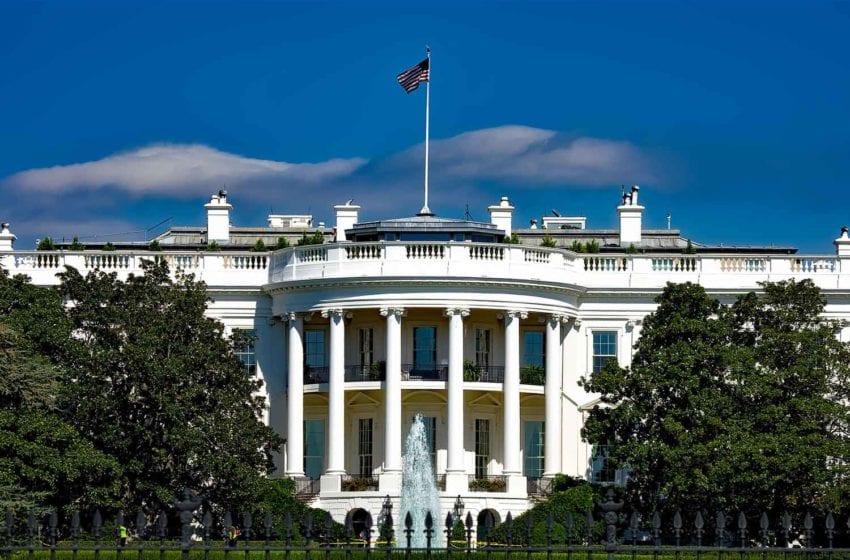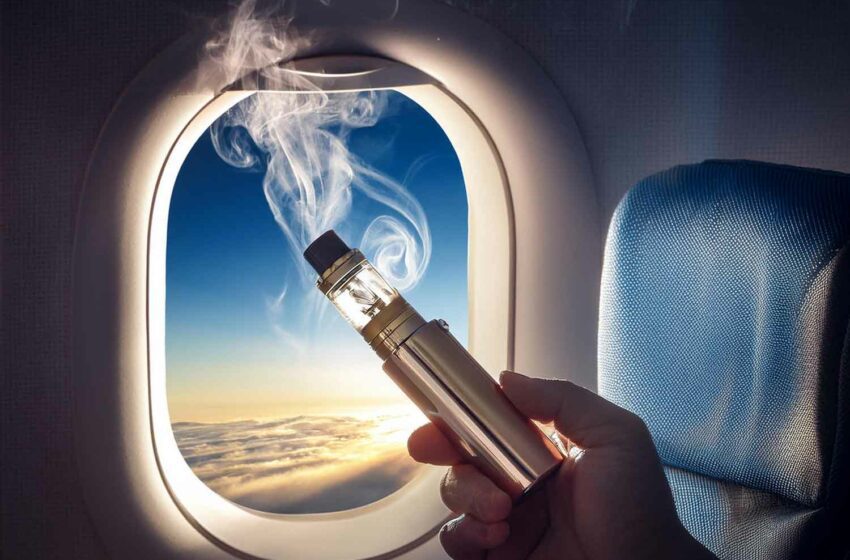
Participants in the 2019 Global Tobacco & Nicotine Forum agreed that regulation will be decisive for the future of the vapor category.
By Stefanie Rossel
“The vaping market will look very different next year—there is no secure future of next-generation products (NGPs) anymore,” said Elise Rasmussen, founder and president of the Global Tobacco & Nicotine Forum (GTNF), at the opening of this year’s event, which took place in Washington, D.C., Sept. 24–26 under the theme “More choice, less risk.”
The swiftly moving events outside the conference rooms of the Four Seasons Hotel only reiterated her prediction. During the two GTNF event days, Massachusetts and Rhode Island announced temporary bans on sales of flavored vapor products, following the examples of Michigan and New York, which had passed similar “emergency” legislation earlier in September. At the time of writing, Washington had joined them while Illinois, Delaware and New Jersey were considering like measures. Massachusetts announced a blanket ban on all vapor products.
Meanwhile, Walmart announced it would stop selling all e-cigarettes. The U.S. Food and Drug Administration (FDA) opened a criminal inquiry into the supply chain of vapor products and devices. President Donald Trump also got involved in the debate. On Sept. 11, he announced that his administration would ban all nontobacco flavored e-cigarettes in order to cut down on the increasing number of youth e-cigarette users and to address widespread concern as a mysterious lung illness linked to vaping spread throughout the U.S.
Trump’s plan would go further than previous restrictions announced by the FDA to ban the sale of all types of flavored e-cigarettes, excluding menthol and mint flavors, in stores that don’t have areas prohibiting people under the age of 18, the federal minimum age to buy tobacco products.
The bans and Trump’s announcement hit the world’s largest vapor market at a time when the exact cause for the illness is yet unknown. The sudden turnaround in U.S. vaping policy also prompted Kevin Burns to step down as CEO of Juul Labs, the largest manufacturer of vapor products in the U.S. Juul Labs also suspended all broadcast, print and digital product advertising in the U.S. Furthermore, it caused Philip Morris International (PMI) and Altria to call off talks to reunite their businesses. Altria holds a 35 percent stock in the beleaguered Juul Labs.
Opportunity for Progress
“This is a pivotal moment for the industry, and strong leadership and action are urgently needed,” said Howard Willard, chairman and CEO of Altria Group, at the GTNF. “We must acknowledge that a key component of harm reduction, vaping, is at an inflexion point.” While the U.S. witnessed an epidemic of youth vaping and restrictions on vapor products for adults, he continued, the public had legitimate concerns about marketing practices and flavored products. “Vaping products including those that are illegal are at the center of a national investigation. Consumers are concerned and unclear about the health risks of these products. Given the tremendous progress made in tobacco harm reduction (THR) over the past 30 years, I find this very discouraging.”
Nevertheless, Willard remained optimistic about the future, pointing out that the stakeholders, including industry officials, public health officials, policymakers, regulators and scientists, had confronted significant challenges before. “The next steps are critically important,” he said. Preserving the harm reduction potential of vaping by shaping proper regulation is a long-term process, according to Willard. With 37 million adult smokers and many of them demanding noncombustible alternatives, innovation and an appropriate regulatory framework, the U.S. has the opportunity to make more progress on reducing the harm caused by cigarettes in the next 10 years than they had in the past 15 years. The industry has an obligation to ensure that the public has access to scientifically grounded information.
While the responsibility currently rests only with the manufacturers, those in public health and the FDA needed to be aware of the fact that adult smokers required their help in obtaining accurate and truthful information. From the confusion of the role of nicotine to the misinformation regarding the relative risks of different products, they had an important task in helping consumers make informed decisions, according to Altria’s CEO.
Willard called for the FDA to optimize its premarket tobacco product application (PMTA) approval process to create a fluent, accelerated and predictable procedure that will be timely enough that consumers will still adopt those reduced-risk products (RRPs). The FDA, he said, should establish a process that accounts for different levels of complexity, permits changes to allow products to improve and gives manufacturers some certainty on what to expect for their efforts and investments.
FDA’s approach criticized
Some GTNF speakers criticized the FDA’s approach. Veronique de Rugy, economist and senior research fellow for the Mercatus Center at George Mason University, suggested that the effects of the regulatory hurdles erected were tantamount to having frozen development of the iPhone in 2008. Referring to former FDA Commissioner Scott Gottlieb’s statements from 2017 that regulation should encourage not stifle innovation, health policy consultant Scott Ballin said that somewhere along the line in the last two years, the FDA had dropped the ball in moving the agenda forward. “Most of the discussion on e-cigarettes and harm reduction has become toxic, emotional and confusing to the public,” he said. “This didn’t have to happen.”
Mitch Zeller, director of the FDA Center for Tobacco Products, listed the steps his agency had taken to reduce the health impact of tobacco. He underlined the FDA’s mission of a science-based review of tobacco products, stating that the FDA had helped make the review process more efficient, predictable and transparent while upholding its health mission. The day before, acting FDA Commissioner Ned Sharpless testified before the House Energy and Commerce Subcommittee on Oversight and Investigation, saying that the FDA planned to “enforce existing law” rather than ban flavored cigarettes outright.
Matthew Holman, director of the FDA Center for Tobacco Products’ Office of Science, stressed his agency’s efforts in tackling the surge in youth vaping, one of the big themes discussed at the GTNF. According to preliminary data for the 2019 National Youth Tobacco Survey (NYTS), he said, 25.7 percent of high school students were current e-cigarette users with the majority of them citing the use of fruit and menthol or mint flavors. The rise had occurred despite several youth and public education campaigns the FDA had launched in 2014. In 2018, the FDA announced a youth tobacco prevention plan that focused on preventing access, curbing the market of tobacco products aimed at youth and educating teens and their families. A major concern, Holman said, was the popularity of products that closely resemble USB flash drives, such as Juul products, that have high levels of nicotine and emissions that are hard to see.
As part of its youth policy, the FDA had conducted a large-scale undercover nationwide “blitz” of brick-and-mortar stores and online retailers for illegally selling Juul products to minors, and the agency issued more than 1,100 warning letters and 131 civil money penalty complaints to retailers. Warning letters were also sent to Juul Labs and other e-cigarette manufacturers instructing them to submit plans on how they will address youth access and use of their products. An additional warning was directed at Juul Labs for marketing unauthorized modified-risk tobacco products. According to the FDA, the company had made unauthorized claims about the product’s safety to students.
Get Your Data Right
Brad Rodu, professor at the University of Louisville and senior scientist at the James Graham Brown Cancer Center, put the latest youth usage figures as well as the forecast of another 32 percent rise in teen vaping in 2019 into perspective: “The teen vaping epidemic will get worse in 2019,” he predicted, “because there have been changes in the NYTS questionnaire in 2019. It has been taken from paper and pencil to electronic on tablets. Juul is listed for the first time as a brand, and images representing the vape category are included.”
The 2018 NYTS, he pointed out, assumed the high school e-cigarette “epidemic” to be large, showing a prevalence of 21 percent, or 2.29 million, of 15-year-olds to 17-year-olds in the U.S. currently vaping whereas others, such as Vallone and McKeganey, spoke of 11 percent and 9 percent, respectively. Of the vapers surveyed in the 2018 NYTS study, many vaped marijuana.
Rodu concluded that while teenagers may vape more, there has been a historic decline in teen and young adult smoking. Among 12-year-olds to 17-year-olds, smoking rates dropped to under 3 percent in 2018, a decline of 11.5 percent since 2015. Among 18-year-olds to 25-year-olds, smoking prevalence fell by 9.5 percent during that period, standing at approximately 19 percent last year. These figures, he said, didn’t look bad compared to other “real” high school epidemics, such as texting/emailing while driving (39 percent), drinking alcohol (30 percent) or consuming marijuana (20 percent).
Michael D. Stein, professor of health law, policy and management at the Boston University School of Public Health, sought to explain teens’ fascination with vaping by providing insights into the minds of youths. Looking at the question of whether adolescents can deliberate, he said that there were three vital factors determining youth behavior: self-control, the need for experimentation and taking risk, and future orientation. Self-control increases as adolescents are growing up. The quest for experimenting explains why driving fast is more rewarding for teenagers. Future orientation in teenagers is weaker, meaning that what they experiment with might not last forever. Vaping might thus soon no longer interest them.
While smoking is at a generational low in the U.S., social sources remain the primary point of access, Jennifer Hunter, senior vice president of corporate citizenship for Altria Client Services, pointed out. Only a small percentage of 15-year-olds to 17-year-olds purchased their cigarettes, other tobacco products or e-cigarettes from stores; the vast majority had been offered the products, asked for them, gave money to someone to buy them or simply took them. Altria, like its competitors and most panelists, supports the recent U.S. policy to set the legal age of purchase for tobacco products to 21. The company has just started a new $100 million campaign to address youth vaping, Hunter said. The desired outcomes include that youth vaping rates will be on the decline and rates of traditional tobacco product usage continue to decrease by 2022. Furthermore, Altria hopes to see 21 as the legal age of purchase at the federal level or in the majority of states. Retailer compliance rates are aimed to stand consistently at 90 percent to 95 percent.
The danger of twisted facts
While panelists agreed that policy should be driven by facts and scientific data, many lamented the use of flawed science and the twisting of facts for ideological purposes. Konstantinos Farsalinos, research fellow at the Onassis Cardiac Surgery Center, pointed out that Michael Bloomberg’s public statement that most people who vaped had never smoked before remained uncontested despite publicly available data by the National Health Interview Surveys showing the opposite. He ticked off a series of flawed arguments used to support bans or restrictions of vapor products, including the suggestion that nicotine was a poison, that vaping was a trick of the tobacco industry to keep people addicted to nicotine and that flavors were introduced to hook kids on nicotine.
He said that from an epidemiological viewpoint, the reports of respiratory failure should be classified as acute cases rather than problems relating to long-term use of e-cigarettes. Furthermore, the cases were unrelated to conventional e-cigarette products available in the U.S. and other countries—otherwise there would have been similar outbreaks in previous years and in other countries. Citing a characteristic case, he showed that the lung disease was most likely related to the vaping of THC oils, which use compounds such as vitamin E acetate as well as vegetable oils as solvents that are not used in conventional e-liquids.
Despite these insights, alarmist headline writers have fingered vaping in general as the culprit.
“There is a fierce opposition against e-cigarettes, with the U.S. becoming the leader,” Farsalinos said. “While concerns are legitimate and reasonable, they are presented in a distorted and irrational way. There is no clear warning on the real cause of acute lung failure cases. This unfortunate outbreak is used to speed up regulation, such as flavor bans that are irrelevant, while there is no debate about the uncontrolled illicit THC market. Most of the vape market will disappear, except for the big players, and there will be a relapse to combustibles.”
Regulatory Superpowers
Creating a smoke-free world with the help of reduced-risk products (RRP) will remain a challenge outside of the U.S. too, according to Michiel Reerink, vice president of global regulatory strategy at Japan Tobacco International (JTI) and outgoing chairman of the GTNF advisory board. “The World Health Organization’s (WHO) Framework Convention on Tobacco Control (FCTC) recommended again that e-cigarettes should be banned,” he said. “There are now 14 countries where e-cigarettes are prohibited. Often, this regulation is initiated with a hint at use by minors.” By contrast, the United Kingdom, where 7 percent of the population vapes, had no youth use problems, said Reerink, quoting Action on Smoking and Health (ASH) U.K. In mid-September, India became the largest tobacco market to date to ban vaping. According to WHO data, the country has 1 million tobacco-related deaths a year. Of the 1.3 billion population, roughly 106 million adults smoke. Reerink said consumers would be better served by regulation than prohibition.
Currently, there are three regulatory superpowers, according to Clive Bates, director of Counterfactual: the U.S., the European Union and the WHO, with the first two interacting with the latter. “They are different in approaching their task, but the most dangerous is the WHO,” Bates said. “It is a norm setter through political consensus and creates the legitimacy for a country to do the right thing. The system of the WHO is truly terrible—there is a tendency to extremes.” Countries compete to please the organization: “When India bans vaping, it gets a pat on the shoulder,” said Bates.
The WHO’s strategy toward RRPs since 2014, he said, had been to deny any benefit of e-cigarettes. Two policies emerged from this point of view—outright bans and policies that treat vapor products like combustible cigarettes, subjecting them to measures such as plain packaging. Bates was concerned about next year’s FCTC Conference of the Parties. “More restrictive measures will go into the FCTC,” he predicted. “The WHO is a real threat; they want to stop development of RRPs in their tracks and to eradicate nicotine from their sketchbook altogether.”
Mark Firestone, president of external affairs and general counsel for PMI, confirmed that internationally, RRPs are frequently treated by regulators as tobacco products. “We maintain the status quo of laws that are not contemporary with NGPs and innovation and technology. We have to challenge ourselves to have regulation internationally that is contemporary,” he said. Firestone recommended doing away with “false equivalencies” and listening to consumers in the literal and metaphorical sense when shaping regulation.
Wanted: a culture-oriented approach
While making an impact around the globe, regulation is mostly coined in only one region, according to Marewa Glover, director of the Centre of Research Excellence on Indigenous Sovereignty and Smoking. The FCTC, for example, is dominated by the Euro-Western school of thought. “What governments in the U.S. or the U.K. do has ramifications for the rest of the world, which is not always good,” she said. In her home country, New Zealand, a 10 percent tax hike on Jan. 1, 2015, made cigarettes unaffordable for many people. Tax increases are a tool promoted by the FCTC to drive down smoking rates. Because New Zealand’s isolated geography makes smuggling cigarettes into the country nearly impossible, criminals have found a different tool to “serve” the market—robbing convenience stores. Another example of the power of foreign influence was evident in New Zealand’s “vaping to quit” smoking campaign, which was delayed after U.S. President Trump announced his intention to ban flavored e-cigarettes. The New Zealand government is now too looking at banning flavors in vapor products.
Tax increases dictated by the FCTC in Fiji, Glover continued, have driven indigenous Fijians back to smoking suki, a rope tobacco typical of the island state. In the north of Sweden, which has a cold climate, regulation had the opposite effect: Here, an indoor smoking ban caused the Sami people to switch from smoking to using snus, the country’s traditional oral moist snuff, which, as 30 years of scientific evidence suggests, is a less harmful alternative to combustible cigarettes.
With vaping under pressure in many parts of the world, the U.K. continues to stand out as an example of effective regulation. According to ASH U.K., 7.1 percent of the British adult population currently uses e-cigarettes. Vaper, blogger and consumer advocate Martin Cullip reported that in the National Health Service’s 2018 Stoptober campaign, e-cigarettes were for the first time mentioned as a way to quit smoking. The U.K. government’s liberal stance toward vaping, he said, was all about saving healthcare costs. Nevertheless, its attitude is to quit smoking with vaping and then quit vaping—recreational nicotine use is not on the government’s agenda.
Call for Industry Action
In the light of delayed or abolitionist regulation of RRPs, initiating truthful and accurate communication with adult consumers has become a difficult task for the industry. James Dobbins, senior vice president, general counsel and secretary for Turning Point Brands, explained the negative effects of Juul Lab’s decision to stop all advertising in the U.S. “Most advertising was education about vaping and about switching. When 59 percent of people believe that vaping is as harmful as smoking and this advertising is no longer there, smokers will likely stay with combustibles.” He added that the situation had become chaotic since manufacturers couldn’t communicate that their products are at the less hazardous end of the risk continuum. “Is there room in the legal scheme statutes to make a reduced-risk claim?” he wondered.
David Sweanor, adjunct professor of law at the University of Ottawa, feared that with FDA regulation slowed, there would eventually be recognition of the fact that the U.S. had a public health catastrophe. “Tobacco companies will be held responsible for not having done more because they had the better sales and health data but didn’t tell anybody.” He recommended that to be on the safe side in case of future liability claims by regulators, the industry should bring constitutional challenge to be able to inform consumers truthfully or even file complaint against itself for not disclosing information.
George Adams, a cardiologist for Rex Healthcare at the University of North Carolina at Chapel Hill, insisted that robust scientific evidence that proves the absolute and not the relative risk of RRPs has to be the basis of truthful communication with consumers. He said that healthcare specialists, public health authorities and the industry should work together to initiate a study on smokers looking at preventing healthcare costs. Standardized trials to develop clinical trials should be used to show the safety and efficacy of RRPs, two factors that are vital to the recommendation of these products.
Toward a Sustainable Future
Ensuring a sustainable value chain was another topic this year’s GTNF tackled. Stephane Colard, project leader of Coresta who took over as the organization’s secretary general from Pierre-Marie Guitton on Nov. 1, 2019, examined whether the United Nations (UN) Sustainable Development Goals (SDGs) were a threat or an opportunity for creating value collectively and sustainably in the tobacco industry. The SDGs’ main objective is the reduction of inequalities within and between countries. The 17 goals of the 2030 development agenda, which UN member states adopted in 2015, include targets such as prevention of poverty and hunger, access to clean water and sanitation, and quality education. For the tobacco and alternative sectors, Colard observed, good health and well-being, decent work and economic growth, responsible consumption and production as well as industry innovation and infrastructure were the most important factors in the ranking. To remain competitive, companies needed to align their business strategies, decisions and actions with the SDGs, he said.
Jim Lutzweiler¸ vice president of agriculture and livelihoods for the Foundation for a Smoke-Free World (FSFW), lamented that many in the NGO community do not understand how business works. “The world is not changing but restructuring,” he said. The FSFW is setting up a center for agricultural transformation in Malawi in order to reduce that country’s economic dependence on tobacco cultivation. “Our task is to start partnerships to help substantial development [growth],” Lutzweiler explained. “We are driven by one thing: profitability for small-scale farmers. It’s a complicated process and nothing short of changing their whole economic sector.” In order to achieve this objective, significant investments should be made in science, technology and innovation, policy transformation, and commercialization, he added.
Gender equality is one of the UN sustainable development goals. In the traditionally male-dominated tobacco industry, 30 percent of employees today are women but only 21 percent of them are in managerial positions, according to Alexandra Solomon, senior research analyst for ethics and human rights at the FSFW. The number of women on boards is still low, amounting to 30 percent in Europe, 19 percent in Asia and 16 percent in the U.S. Yet studies have shown that companies with more women on their boards are more profitable. In most countries, the gender pay gap remains significant; in the U.K., where reporting on salary has become mandatory for companies, women working for British American Tobacco earn on average 34 percent less than their male colleagues and receive 67 percent less in bonuses, Solomon said.
While challenges abound for the tobacco industry, investors agreed that the outlook for the sector was positive. Analysts predicted that in the U.S., the leading companies, including Juul Labs and PMI, were well prepared to eventually receive marketing authorization for their main products even after a court ordered the FDA to bring forward the deadline for premarket tobacco product applications. Smaller companies, by contrast, are likely to struggle to prepare the costly and time-consuming paperwork.
On the global scale, regulation and affordability will be decisive for the development of the of NGP category, in particular, with regard to emerging markets. For investors, the combined tobacco and NGP sector will remain interesting, according to Jonathan Fell, partner and co-founder of Ash Park Capital. “Investors have moved away from tobacco recently, but in the long run, ‘sin stocks’ will be attractive,” he said. “They will boost the return for people that take the higher risk.”













